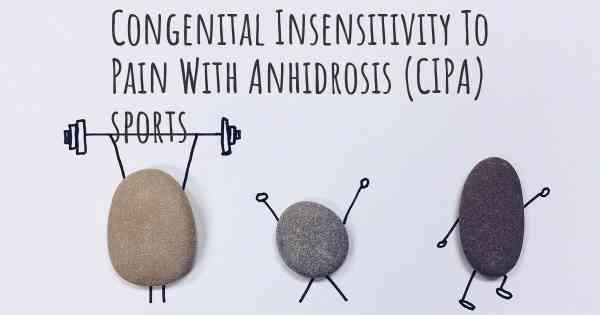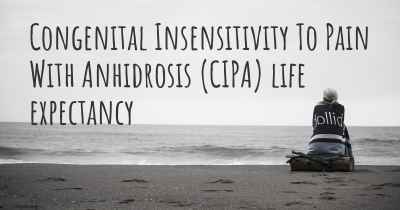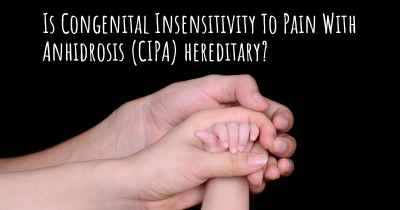Is it advisable to do exercise when affected by Congenital Insensitivity To Pain With Anhidrosis (CIPA)? Which activities would you suggest and how intense should they be?
See if it is advisable for people with Congenital Insensitivity To Pain With Anhidrosis (CIPA) to practice sports and which ones are the most recommended if you have Congenital Insensitivity To Pain With Anhidrosis (CIPA)

Is it advisable to do exercise when affected by Congenital Insensitivity To Pain With Anhidrosis (CIPA)?
Congenital Insensitivity To Pain With Anhidrosis (CIPA), also known as hereditary sensory and autonomic neuropathy type IV (HSAN IV), is a rare genetic disorder that affects the nervous system. People with CIPA are unable to feel pain, temperature, and have decreased or absent sweating. This condition poses unique challenges when it comes to exercise and physical activity.
Exercise Benefits
Engaging in regular exercise can have numerous benefits for individuals with CIPA. It can help improve cardiovascular health, maintain a healthy weight, enhance muscle strength and flexibility, and promote overall well-being. However, it is crucial to approach exercise with caution and take certain precautions due to the inability to feel pain and regulate body temperature.
Choosing the Right Activities
When selecting exercises, it is important to focus on activities that minimize the risk of injury and overheating. Low-impact exercises that are gentle on the joints, such as swimming, cycling, and walking, can be excellent choices. These activities provide cardiovascular benefits without putting excessive stress on the body.
Intensity and Duration
The intensity and duration of exercise should be tailored to the individual's abilities and overall health. It is recommended to start with shorter durations and gradually increase as fitness levels improve. Consulting with a healthcare professional or a qualified exercise specialist can help develop a personalized exercise plan that takes into account the specific needs and limitations associated with CIPA.
Precautions and Safety Measures
Due to the inability to feel pain, individuals with CIPA should take extra precautions to prevent injuries. Regularly inspecting the body for any signs of damage, such as blisters or wounds, is essential. Wearing appropriate protective gear, such as helmets, knee pads, and elbow pads, can also help reduce the risk of injuries during physical activities.
Monitoring Body Temperature
Since individuals with CIPA have impaired sweating, it is crucial to monitor body temperature during exercise to prevent overheating. Exercising in a controlled environment, such as a well-ventilated room or a swimming pool with a comfortable water temperature, can help regulate body heat. Taking frequent breaks, staying hydrated, and avoiding exercise during extreme weather conditions are additional measures to consider.
Listening to the Body
While individuals with CIPA may not experience pain, it is important to pay attention to other signals that the body provides. Fatigue, shortness of breath, or any unusual sensations should not be ignored. If any discomfort or abnormal symptoms arise during exercise, it is advisable to stop and seek medical attention if necessary.
Conclusion
Engaging in exercise and physical activity can be beneficial for individuals with Congenital Insensitivity To Pain With Anhidrosis (CIPA). However, it is crucial to choose appropriate activities, monitor body temperature, take necessary precautions, and listen to the body's signals. Consulting with healthcare professionals and exercise specialists can provide valuable guidance in developing a safe and effective exercise plan.








